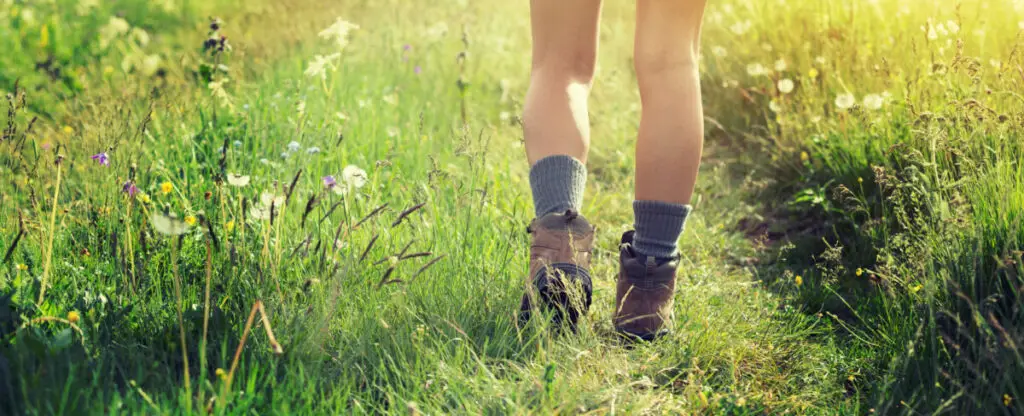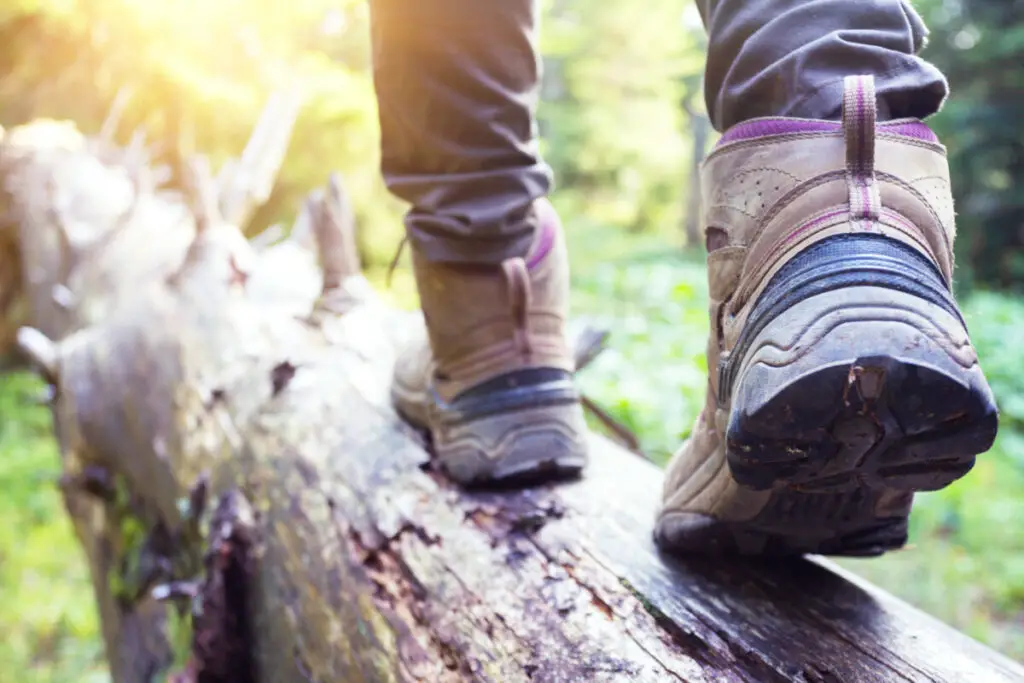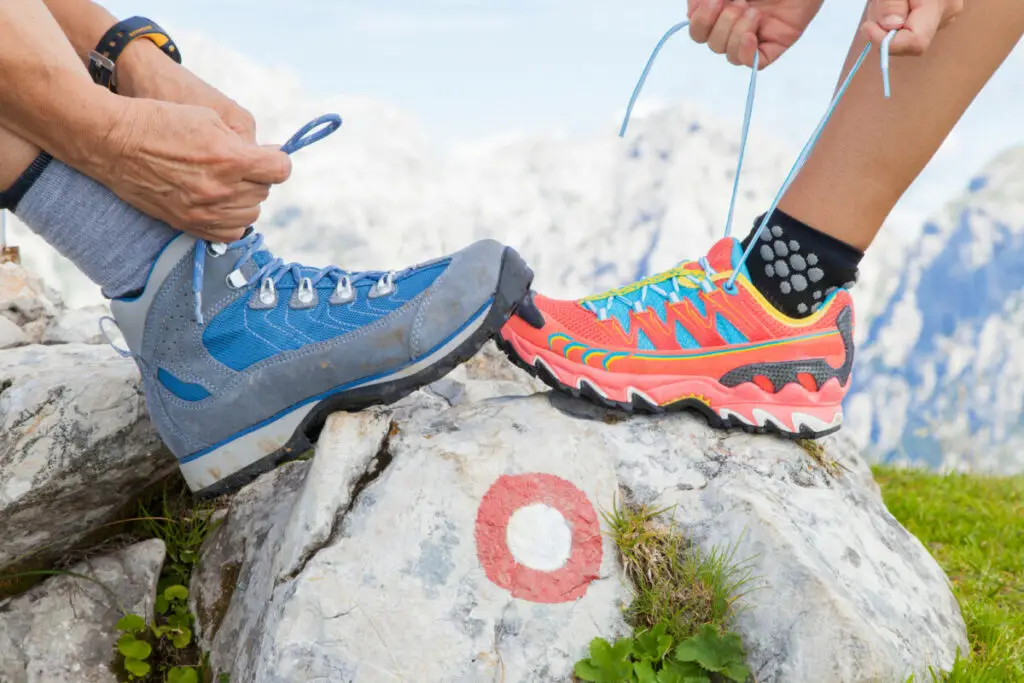
Hiking doesn’t require much training or previous experience to begin hiking either, making it a great outdoor hobby for beginners. That does not mean it comes without its own challenges. Like runners, damage to and loss of toenails is a common injury among hikers.
Toenail loss in hiking is caused by two things: sustained trauma to the nail caused by repeated contact with the top or front of the boot, or fungal infection. While such injuries are common, they are also easily prevented by good hygiene and hiking practices combined with proper footwear.
Let’s take a look at some commonly seen causes of nail and foot trauma in hiking, and some things that affected hikers can do to prevent these issues.
What Causes Toenail Damage
Trauma
As previously mentioned, a nail sustains trauma when the toe makes repeated contact with the front of the boot. This is called toe bang hiking— when the foot slides down to the front end of the boot, banging the toes against the front. The consistent pressure causes the nail to lift slightly from the nail bed, resulting in a blood blister underneath the nail that eventually scabs and causes the whole thing to fall off. This repeated contact can be caused by a number of things. Untrimmed nails also increase the likelihood of damage.
The most common reason is that the hiker in question is not wearing the proper footwear. While running shoes or sneakers may suffice for the streets at home, the demands of hiking on rougher terrain can make the foot require sturdier and more-fitted shoes to handle. Wearing ill-fitting boots that are too short causes constant contact of the toe with the front of the boot. Likewise, shoes that are too large and improperly laced can allow your feet to slide forward and make contact with the front of the shoe as well, especially when walking downhill.
Speaking of socks, using the wrong thickness or size socks can negatively affect foot health too. Socks that are too thick will increase the volume your foot takes up within the boot, increasing the pressure put upon your toes by the top and sides of the boot. Socks that are too loose can cause the same issue, bunching around the toes as you walk.

Fungal Infection
The other common cause of toenail loss is fungal infections. Though not all fungal infections are athlete’s foot, they do grow from the same common factors: unclean wet shoes or socks. In using a hiking shoe that is dirty, the chance of infection increases significantly. Fungal infections can cause the skin to flake off or blister, itch, and nails to fall off or even decay. It is not a pretty sight.
Fungus can be introduced by not cleaning hiking shoes regularly, wearing dirty or wet socks, walking barefoot around camp, or wearing wet or damp shoes without allowing time for them to dry. All of these factors create a perfect breeding ground for infection.
How to Prevent Toenail Damage
Properly Fitted Boots
The biggest factor in preventing toe trauma is to make sure your footwear fits. Unlike street shoes, where a closer fit can be acceptable, hiking shoes should provide both space and support, as feet do move around when hiking up and downhill. Hiking shoes should be at least 1/2 size larger than street shoes, allowing enough space for your feet to safely move around without making contact with the front of the boot. They should also have proper support for your arches and ankles.
In addition to making sure one’s boots fit, take your time when hiking downhill or over uneven ground. Ill-fitted boots are going to feel even more uncomfortable when hurrying downhill, both gravity and size pushing your toes against the front edge of the boot. Another way to combat this issue is by using hiking poles, which can help control how you distribute your weight while ascending and descending.
Hiking Socks
The other side of finding boots that fit properly is finding socks you can wear with them. An easy tip for this would be to purchase socks and boots at the same time, so you know what is safe to wear without being too bulky or too thin. Wearing both a sock liner and an outer sock are good ways to ensure support while also promoting good foot hygiene.
Hiking-specific socks can provide traction within the shoe to help prevent feet from slipping within the shoe. They also act as a great cushion between the foot and the boot, limiting the wear on your toes. However, as previously mentioned, socks that are too bulky can have the opposite effect.
Lacing Techniques

Proper lacing techniques can also prevent toenail loss. While anyone can tie shoes, hiking shoes require the added support of the laces to help anchor your heel to the back of the boot. When your hiking shoes are properly laced, not only are your shoes secured, your ankles are supported and your foot is less likely to slip inside the boot as you move about. Your feet are also less likely to blister when laced properly into the hiking shoe.
Here are some useful techniques for lacing hiking boots. Use the extra eyelets on your trail shoes— located at the top of the boot, there should be two eyelets next to one another— to create a loop around the mouth of the shoe that can be tightened to further secure your heel. Use a surgeon’s knot to further secure your boot laces. This can be done by pulling the slack out of the bottom of the boot, then wrapping the laces around each other twice before securing them in the hooks at the top of the boot.
Good Hiking Hygiene
This final preventative measure seems like a no-brainer, but it is always a good reminder. Firstly, trim your toenails before hiking. Make sure they are cut short straight across, but not so low that it becomes painful. Not only does this prevent toenail damage, but it can also reduce the likelihood of infection. It is also important to start out a hike with clean feet.
Before heading out on a hike, be sure to clean your gear. Wash your hiking boots between trips and spray an anti-fungal to kill any unwanted fungus that may be inside. Though keeping hiking boots clean on multi-day trips might be a bit more difficult, there are other steps you can take as well.
Bring extra socks for hiking so that your feet are always dry inside your boots. If shoes or socks get wet during a hike, be sure to let them dry before wearing them again. Wearing water-resistant boots can also help with this issue, as can wearing moisture-wicking socks.

